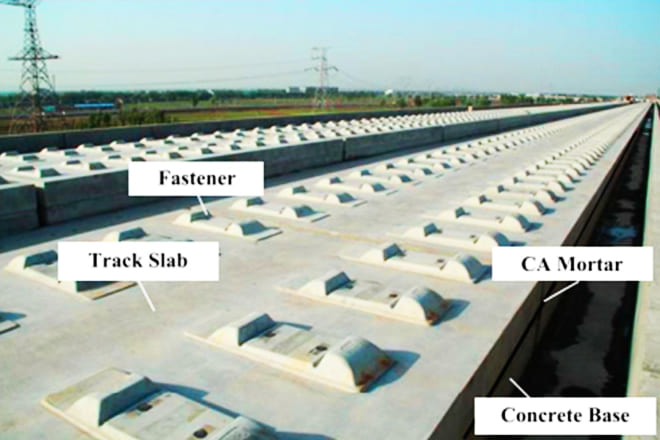Asphalt Pavement Applications in Railway Track Support Systems
In railway construction, various asphalt types and bituminous products have been introduced and used. This includes applications such as hot mix asphalt (HMA), warm mix asphalt (WMA), mastic asphalt, and asphalt mortar, with various types of bitumen from normal bitumen to emulsion bitumen to rubber and polymer-modified bitumen. The most common purpose of these applications is to reduce the amount of stress and strain on subgrades. Additional studies have examined the waterproofing properties of asphaltic materials, which are also used to protect subgrades.
Asphalt applications under railway tracks can generally be divided into three categories: the first involves using an asphalt mixture with a ballasted track, the second involves laying asphalt directly under railway tracks, and the third involves using asphalt mortar.
1. Asphalt in Ballasted Railway Tracks
A ballasted track is one of the main applications of asphalt mixtures. A ballasted railway track with asphalt pavement as a supporting component can be seen in the below figure. In the United States, this method is called “asphalt underlayment,” and it consists of a layer of asphalt between the sub-ballast and the ballast. On both sides of the crossties, the asphalt layer typically extends around 30 cm beyond the ends of the crossties.


Fig: Schematic of combinations of asphalt layers in a ballasted track bed: (a) asphalt as a sub-ballast and (b) asphalt between the ballast and the sub-ballast.
Among the benefits of asphalt underlayment are higher track stiffness and bearing capacity, increased geometrical stability, decreased vertical track deformation, waterproofing, enhanced durability, and reduced vibration. The use of asphalt underlayment is recommended for at-grade rail crossings in order to minimize the settlement of the track and road in the crossing area. Caltrain in San Francisco and Metrolink in Los Angeles were among the first urban railways to use a layer of asphalt with a 20 cm and 15 cm thickness, respectively, under crossovers and crossings. In addition, most new crossovers and turnouts on both lines are built over asphalt. It has been shown that the thickness of the ballast-covering layer has a noticeable effect on the amount of maximum stress and strain produced at the bottom of the asphalt layer.
2. Asphalt in Ballastless Tracks
The second category uses asphalt in ballastless tracks. This method involves placing asphalt directly under the sleepers (crossties) or a concrete slab. It functions similarly to a slab track. Originally, this method was used to construct high-speed railways and urban transit lines in Europe. The below figure shows a schematic structure of a ballastless railway track with an asphalt layer.


Fig: Schematic of combinations of ballastless layers in a track bed: (a) asphalt slab track and (b) asphalt between concrete slab and subgrade.
Asphalt is generally used under concrete slab tracks in the United States. It is generally used on lines with heavy freight traffic and for maintenance. For the Long Island Railroad station (LIRR), constructed in the 1980s, a layer of asphalt-treated sub-base was laid over a compacted subgrade to support concrete slab track panels 30 to 35 cm thick. Despite being in service for a long time, the slab track’s performance has not deteriorated. Ballastless tracks are more common in European countries than in the United States.
3. Asphalt Mortar in Ballastless Track
Japanese, Chinese, and Italian high-speed rail systems are constructed over layers of asphalt mortar, which protects the subgrade. The Japanese design method involves a prefabricated concrete slab over a bitumen-cement mortar. The bitumen-cement mortar is an important component of this method. As a result, the asphalt layer distributes the load uniformly on the subgrade. It also creates a waterproof surface that maintains the moisture content in the subgrade. Based on a dynamic analysis of slab track behavior, a higher mortar stiffness leads to a slight decrease in concrete slab displacement. In a study on a Chinese high-speed railway, a thicker slab, lower rail fastening stiffness, and higher mortar stiffness were suggested to decrease slab bending stresses. Chinese railway designers consider mortar a semi-rigid composite that is injected between the track slab and the concrete bed. Among the main factors that determine a high-speed railway’s safety and service life are the mortar’s mechanical properties, elastic modulus, and durability. We should mention that extreme weather conditions significantly affect the performance of mortar. The below figure shows the bituminous mortar (bitumen-cement mortar) layer under a slab track.


